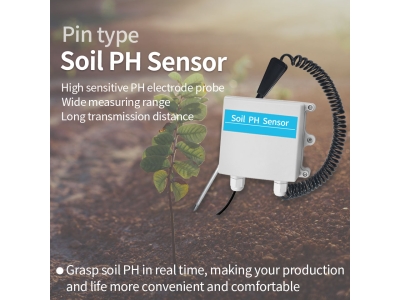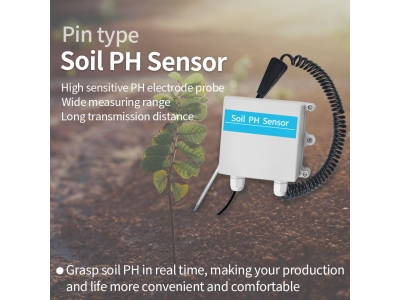Precision agriculture is a modern farming practice that utilizes technology to optimize crop management, increase productivity, and minimize environmental impact. One of the key technologies contributing to precision agriculture is the use of soil sensor networks. These networks provide real-time data on various soil parameters, allowing farmers to make informed decisions regarding irrigation, fertilization, and overall crop management. This article explores the advantages of soil sensor networks in enhancing crop management and the potential benefits they bring to farmers.
Real-Time Monitoring and Data Analysis
Soil sensor networks consist of multiple sensors strategically placed throughout the fields. These sensors continuously measure soil moisture, temperature, pH levels, and nutrient content. The data collected by these sensors is transmitted wirelessly to a centralized system, where it is processed and analyzed. This real-time monitoring allows farmers to have up-to-date information on the soil conditions, enabling them to make timely decisions.
Precision Irrigation
Water management plays a crucial role in crop productivity and resource conservation. With soil sensor networks, farmers can accurately determine the water requirements of their crops. By monitoring soil moisture levels, they can avoid both over- and under-irrigation, ensuring that plants receive the optimal amount of water. This precision irrigation not only saves water but also reduces the risk of water stress or waterlogging, which can negatively impact crop yield.

Optimized Nutrient Management
Proper nutrient management is essential for healthy crop growth. Soil sensors provide valuable insights into the nutrient content of the soil, allowing farmers to apply fertilizers precisely where and when they are needed. By avoiding excess fertilizer application, farmers can prevent nutrient runoff, which pollutes water bodies. Soil sensor networks help optimize nutrient management, leading to improved crop health and reduced environmental impact.
Early Detection of Soil Issues and Pest Infestations
Soil sensor networks enable farmers to detect soil issues and pest infestations at an early stage. Changes in soil moisture levels or nutrient content can indicate potential problems such as soil erosion, salinity, or nutrient deficiencies. By detecting these issues early, farmers can take necessary measures to remedy the situation before it negatively affects the crop yield. Similarly, soil sensors can also detect changes in soil temperature, which can help identify pest activities. Early detection allows for targeted interventions and reduces the need for widespread pesticide application.
Improved Decision-Making and Resource Allocation
The data captured by soil sensor networks provide valuable insights that aid farmers in decision-making. By understanding the specific needs of each crop and field, farmers can allocate resources effectively. For instance, if the soil moisture level is consistently low in a particular area, farmers can prioritize irrigation resources accordingly. This targeted approach optimizes resource allocation, reduces waste, and improves overall farm efficiency.
Integration with Other Technologies
Soil sensor networks can be integrated with other technologies, such as satellite imagery and weather forecasting systems, to further enhance crop management. By combining data from various sources, farmers can gain a comprehensive understanding of their fields. Satellite imagery provides information on vegetation growth, while weather forecasts help predict rainfall patterns. Integrating these data sets allows farmers to make more informed decisions regarding irrigation, fertilization, and pest control.
Conclusion
Precision agriculture with soil sensor networks is revolutionizing crop management practices. The real-time monitoring, precision irrigation, optimized nutrient management, early detection of soil issues, and improved decision-making are all benefits that contribute to increased crop productivity and sustainability. As technology continues to advance, soil sensor networks will play an even more significant role in the future of agriculture, helping farmers feed the growing global population while minimizing environmental impact.






